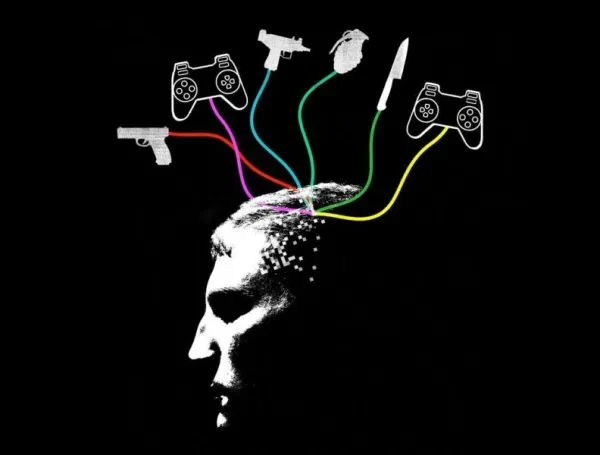
You do not have to go back to the release of Grand Theft Auto to find the first controversy from violent video games. In 1976, not only was Sylvester Stallone’s first Rocky movie released, one my favorite movies, but “Death Race” was also released as an arcade game from Exidy. The object of this game was to run over “Gremlins”, or “Zombies”, in order to score points. After a public outcry, due to some sound effects and a tombstone appearing after the collision, Exidy pulled the game off the market. However, in 1993 the U.S. Congress was called into action. Senators Joseph Liberman and Herbert Kohl questioned both Howard Lincoln, who was a representative from Nintendo of America, and Bill White from Sega of America. During the almost 2 and half hour C-SPAN coverage, which can still be found on Youtube today, the senators pointed out the less gory version of Nintendo’s “Mortal Kombat” and the fact that Nintendo did not release “Night Trap”, which was also deeply controversial, so much so that Sega pulled it off the market in 1994. The proceedings, however, helped spring board the Entertainment Software Ratings Board (ESRB) that we still use today.

ESRB (Google Images)
So what does a hearing from 1993 have to do with this article? Well, this hearing laid the foundation for what is still an ongoing debate, Furthermore, what Bill White said still lingers to present day, “more research is necessary”.
Mr. White’s salient statement seems to be the broken record of the video game violence study. I hesitate to even site studies in this article for the mere fact that you can find one that claims the opposite even though they were written around the same time, but I digress.
In an article by the National Center for Health Research by Emily Mazurak, ”One problem with the research on violence and video games is that it has mostly relied on self-reporting, that is, teenagers and young adults describing their game playing habits and aggressive behaviors in the past and present. No studies have yet been published where researchers followed kids who play violent video games for a number of years to see how it affects them.” You can read the full article here.

"Violent Video Games" (Google Images)
In another study, by the University of New York (UoY), conducted by Dr. David Zendle, who graduated with a Ddoctorate of Philosophy (PhD), Human Computer Interaction from the UoY in 2016 and has been sited as an expert in violent video effects, found that after doing a series of experiments with over 3,000 participants there was no link of playing violent video games and their effects on the player’s aggression. Read the study here for the details of how it was conducted.
The 1993 hearing is a blast from the past with President Trump calling a meeting with top executives from the video game industry to discuss violent video games. All this raises the question of what will our government do, if anything, about “violent” video games? In 1993, then Senator Bryon Dorgan said, “Censoring what people can say, or see, or do, or think is a trail that is a long, torturous, and dangerous trail.” He goes on to say that they do not believe that censorship is the answer, however, their main concern was how do they keep these games out of the hands of children. This article is not meant to have people lean one way or another. It is meant to have gamers understand the background of something that will continue to throw its ugly self in the ring of argument time and time again.
